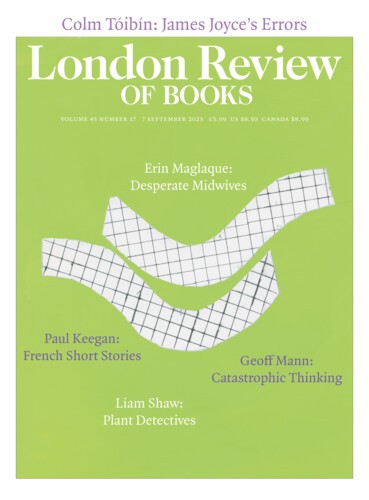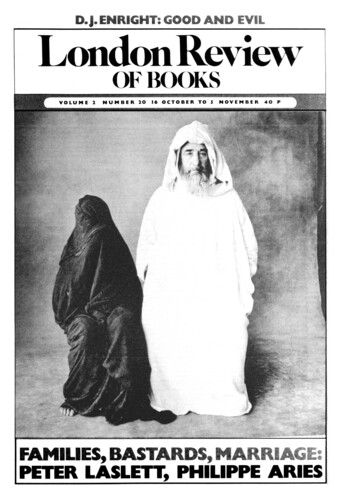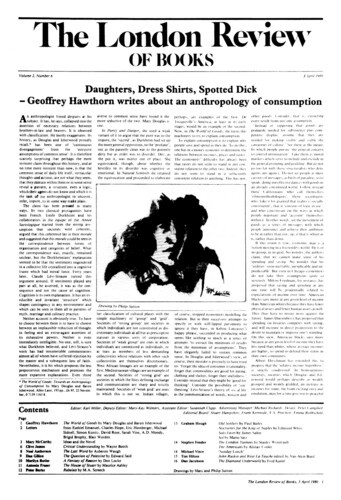Antonia Fraser
Antonia Fraser latest book is King Charles II.
Every inch a king
Antonia Fraser, 16 October 1980
It is legitimate to ask whether there is a need for another full-length biography of Henry VIII. In 1968, Professor Scarisbrick’s great work dramatically revised our thinking about the bloat King. Three years later appeared Lacey Baldwin Smith’s rich and racy study of the King’s character, taken from the viewpoint of old age and subtitled ‘The Mask of Royalty’: here Tudor history and modern psychology made slightly strange but nevertheless exciting bedfellows. Both books are of lasting interest – not least because both have that happy combination of scholarship and ease which makes rereading them a positive pleasure. Nevertheless, the answer to the aforesaid legitimate question must be yes. There can be no state planning over biographies of major figures: here if nowhere else a free-market economy reigns. Even if there is no scholarly gap – and in the case of Henry VIII there is not – there is absolutely nothing wrong with the famous military pair beloved of publishers, General Reader and Major Biography, getting together yet again on the subject.
Dynasties
Antonia Fraser, 3 April 1980
Why should anyone wish to write the history of a Royal house? On one level, the answer to that question is easy: most of us learnt history in childhood in terms of Angevins, Plantaganets and so forth, and these convenient groupings gave shape to what was often so dauntingly shapeless. Patterns inculcated early in life tend to leave a permanent impression, especially on those who take no more than a superficial interest in the subject. For these groupings are in themselves essentially superficial. Where the characters of the individual monarchs are sufficiently imposing, one seldom talks so glibly about the composite nature of the Royal house. What, for example, were the ‘Tudor’ characteristics – those possessed in common by Henry VII, Henry VIII, Edward VI, Mary I and Elizabeth I? Ruthlessness? At first, that seems a promising answer. After all, even Edward VI before his premature death managed to exhibit his father’s notorious ‘frown’. Unfortunately, the generalisation will not bear closer examination. It is simply not accurate to describe Mary Tudor as ruthless. Suppose, following her popular nickname, one substituted ‘bloodthirsty’ for ‘ruthless’ – or at least ‘fanatical’? This merely leaves one with the problem of Elizabeth, who, arguably ruthless, was certainly not bloodthirsty – the very reverse – nor indeed fanatical. The truth is that Elizabeth probably owed more than we generally realise to her mother. The portraits are strikingly similar, except for the colour of the hair: but as Anne Boleyn died young, and in popular disgrace, it is difficult to estimate how she might have turned out. Nevertheless, a comparison between Mary and Elizabeth, daughters of Katherine of Aragon and Anne Boleyn respectively, neatly demonstrates the strength of the maternal gene.
Pieces about Antonia Fraser in the LRB
A Tall Stranger in Hoxton
John Bossy, 3 July 1997
In the spring of 1604, the English were adjusting to the arrival of King James from Scotland, attending to the doings of his first Parliament, and awaiting the arrival of envoys from the King of...
Sexual Whiggery
Blair Worden, 7 June 1984
The history of women has become a lucrative subject. No historical topic offers a better hope of publishers’ contracts, or even, in the United States at least, of academic appointments. Yet...
Injury Time
Robert Taubman, 2 July 1981
Between the three corpses dug out of the snow in Gorky Park, Moscow and the sables let loose in the snow on Staten Island at the end – ‘black on white, black on white, and then...
Love’s Labours
Valerie Pearl, 8 November 1979
In her first line, Antonia Fraser describes her book as ‘a labour of love’. Given her somewhat romantic view of Charles II’s many affairs of the heart and her warm sympathy for...
Read anywhere with the London Review of Books app, available now from the App Store for Apple devices, Google Play for Android devices and Amazon for your Kindle Fire.
Sign up to our newsletter
For highlights from the latest issue, our archive and the blog, as well as news, events and exclusive promotions.



